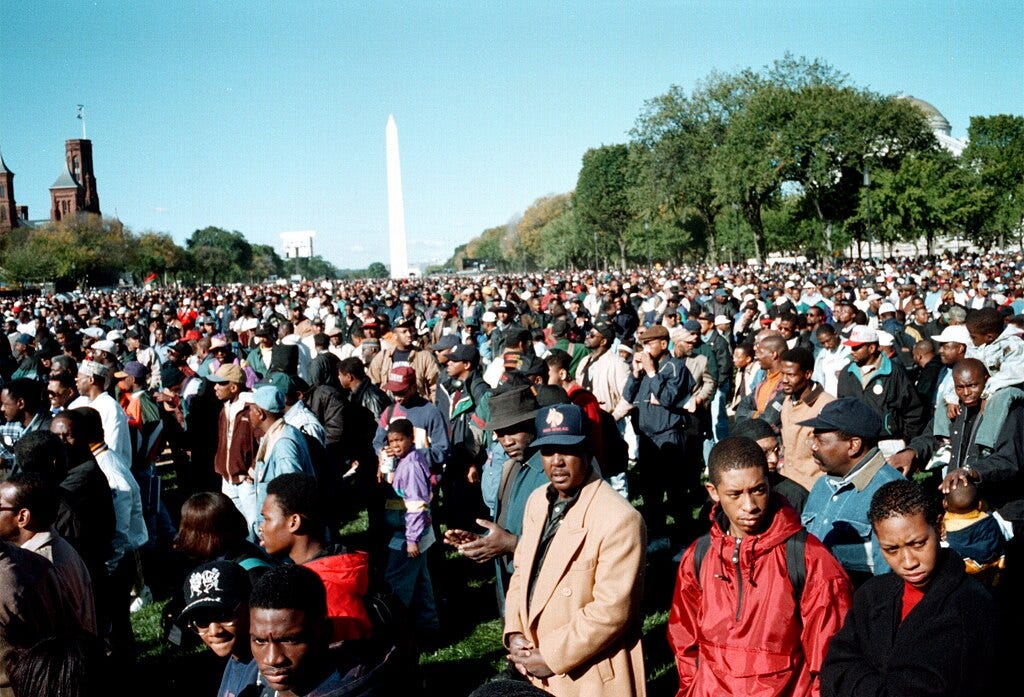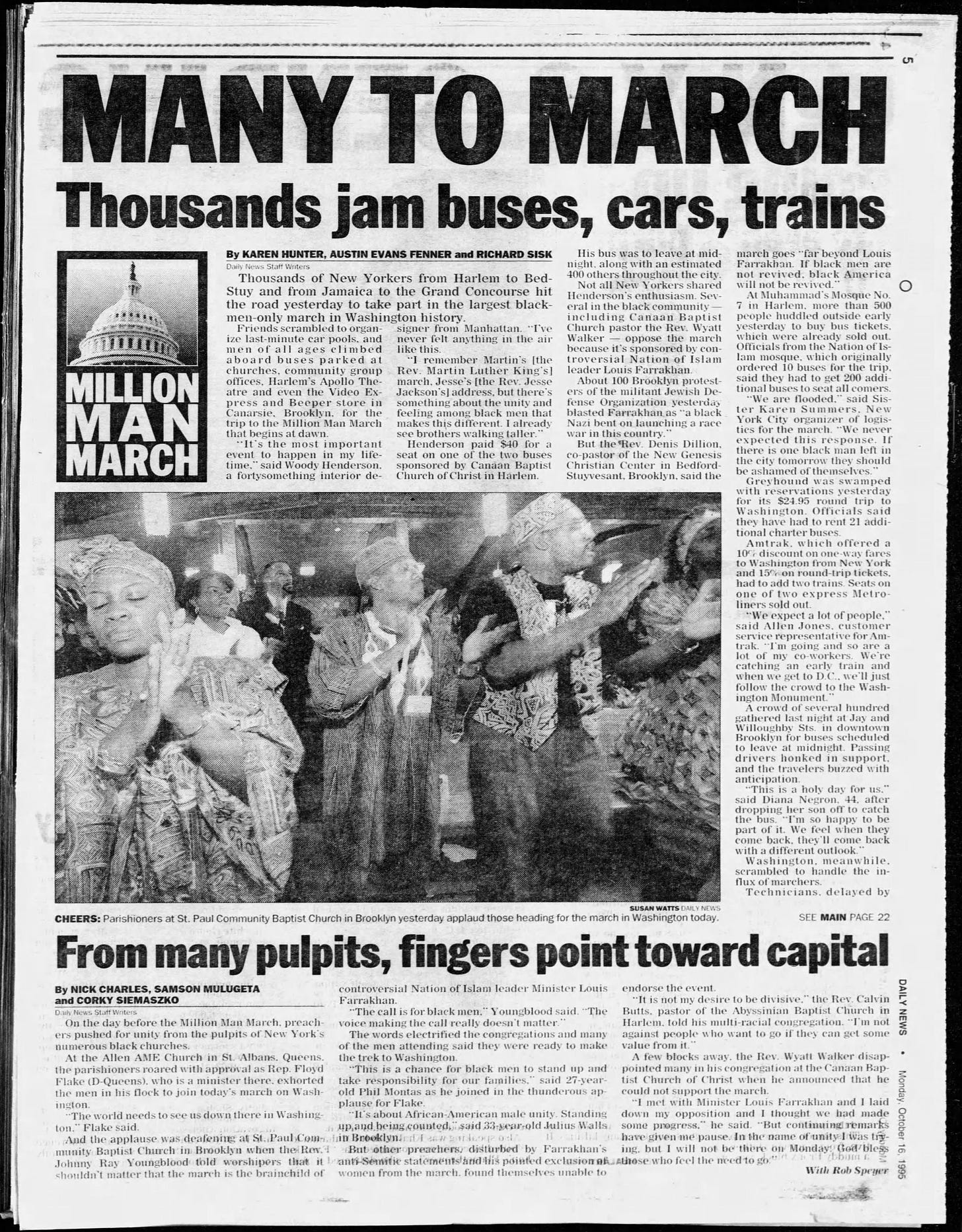This Day in History: The Million Man March

On October 16, 1995, hundreds of thousands of Black men filled the National Mall in Washington, D.C.
The Million Man March, organized by Minister Louis Farrakhan of the Nation of Islam and civil rights leader Benjamin Chavis Jr., became one of the largest assemblages in U.S. history.
The event strived to deliver a new notion of the Black man in America and to facilitate self-help and community rebuilding. It came at a time of political and economic pressure for African Americans, who encountered high unemployment and increasing poverty, with a solution seeming out of reach. Many felt overlooked by policymakers after the Republican takeover of Congress in 1994.
At the march, speakers called on attendees to take responsibility for their families and neighborhoods while committing to moral and social advancement. Farrakhan instructed the crowd to rebuild their communities through faith and discipline.
The day’s program began before sunrise and lasted into the afternoon, featuring prayers, music, and speeches by a range of leaders. Rosa Parks, Betty Shabazz, Jesse Jackson, Martin Luther King III and Maya Angelou all addressed the crowd.
“We are gathered here today not to bash somebody else. We’re not gathered here to say all of the evils of this nation. But we are gathered here to collect ourselves for a responsibility that God is placing on our shoulders to move this nation toward a more perfect union. Now, when you look at the word “toward,” “toward,” it means in the direction of, in furtherance or partial fulfillment of, with the view to obtaining or having shortly before, coming soon, imminent, going on in progress. Well, that’s right. We’re in progress toward a perfect union. Union means bringing elements or components into unity. It is something formed by uniting two or more things. It is a number of persons, states, etcetera, which are joined or associated together for some common purpose. We’re not here to tear down America,” Minister Farrakhan said in part of his address.
While the march was largely male-led, Black women organized a parallel event known as the National Day of Absence. Women and families who could not attend the march were instead encouraged to stay home from work or school and participate in teach-ins, worship services and voter registration drives.
“It’s the most important event to happen in my lifetime,” Woody Henderson, a 40-something interior designer from Manhattan, told Karen Hunter, a journalist for the New York Daily News at the time. “I’ve never felt anything in the air like this. “I remember Martin’s [the Rev. Martin Luther King’s] address, but there’s something about the unity and feeling among black men that makes this different. I already see brothers walking taller.”
There was also an attempt by mainstream media to misrepresent the message and the mission driving the march, which Parks acknowledged in her remarks.
“Although criticism and controversy has been focused on in the media instead of benefits for the one million men assembling peacefully for spiritual food and direction, it is a success. I pray that my multiracial and international friends will view this gathering as an opportunity for all men but primarily men of African heritage to make changes in their lives for the better,” she declared. “I am proud of all groups of people who feel connected with me in any way, and I will always work for human rights for all people. However, as an African American woman, I am proud, applaud, and support our men in this assembly.”
Following the march, the number of attendees quickly became a source of controversy.
The National Park Service estimated that about 400,000 participants would attend, a figure organizers rejected. Researchers at Boston University, using satellite imaging, later put the number closer to 837,000, with a margin of error that could place the crowd above one million. The dispute escalated to the point where the Park Service stopped providing official crowd counts for future Washington events.
The Million Man March would go on to inspire community involvement and voter registration efforts, including the 1997 Million Woman March. Two decades later, Farrakhan organized the 20th anniversary event under the banner “Justice or Else,” drawing a new era of activists, community leaders and freedom fighters to Washington.


